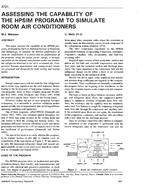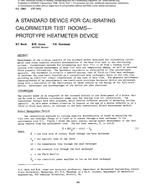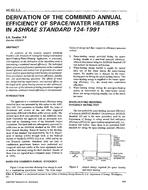The earth continues to see record increases in temperatures and extreme weather conditions that are largely driven by anthropogenic emissions of warming gases such as carbon dioxide and other more potent greenhouse gases such as refrigerants. The cooperation of 188 countries in the Conference of the Parties in Paris 2015 (COP21) resulted in an agreement aimed to achieve a legally binding and universal agreement on climate, with the aim of keeping global warming below 2°C. A global phasedown of hydrofluorocarbons (HFCs) can prevent 0.5°C of warming by 2100. However, most of the countries in hot climates are considered as developing countries and as such are still using R-22 (a Hydrochlorofluorocarbon (HCFC)) as the baseline refrigerant and are currently undergoing a phase-out of R-22 which is controlled by current Montreal Protocol to R-410A and other HFC based refrigerants. These HFCs have significantly high Global Warming Potential (GWP) and might not perform as well as R-22 at high ambient temperature conditions. In this paper we present recent results on evaluating the performance of alternative lower GWP refrigerants for R-22 and R-410A for small residential mini-split air conditioners and large commercial packaged units.
Results showed that several of the alternatives would provide adequate replacement for R-22 with minor system modification. For the R-410A system, results showed that some of the alternatives were almost drop-in ready with benefit in efficiency and/or capacity. One of the most promising alternatives for R-22 mini-split unit is propane (R-290) as it offers higher efficiency; however it requires compressor and some other minor system modification to maintain capacity and minimize flammability risk. Between the R-410A alternatives, R-32 appears to have a competitive advantage; however at the cost of higher compressor discharge temperature. With respect to the hydrofluoroolefin (HFO) blends, there existed a tradeoff in performance and system design. It was noticed that higher glide refrigerants benefited the most from operating in the larger packaged unit with an evaporator in a multi-row counter-cross configuration. This study suggests that there is a strong potential for using lower GWP refrigerants to design and operate more efficient air conditioning systems in hot climates.
Citation: Second International Conference on Energy and Indoor Environment for Hot Climates, Doha, Qatar, February 2017
Product Details
- Published:
- 2017
- Number of Pages:
- 8
- Units of Measure:
- Dual
- File Size:
- 1 file , 660 KB
- Product Code(s):
- D-HCC17-13


